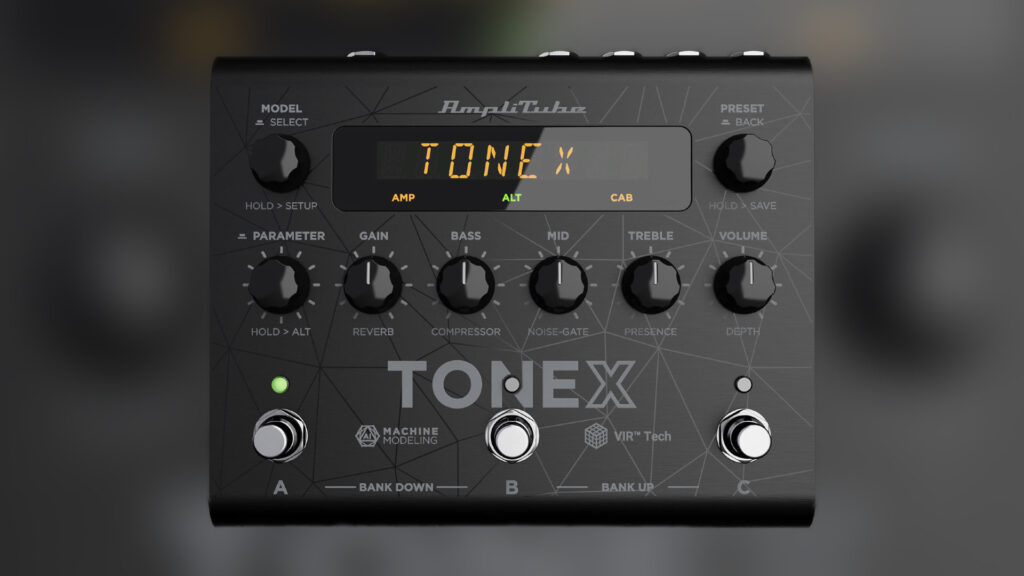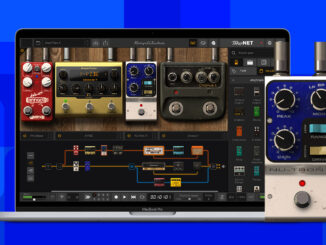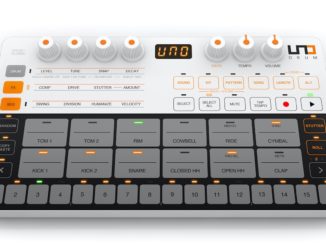IK Multimedia released ToneX, a new AI-powered amp modeler guitar pedal, is this the future, and will we see AI-based synth modeling soon?
Artificial intelligence, aka AI, is difficult to avoid these days. Whether smartphones, computers, and even in music tech, AI is becoming increasingly part of our everyday lives. In music production, we see more and more plugins that use unique algorithms to make our creative workflow smart. Audiomodern, for example, offers plugins where an AI generates endless new beats and melodies for you.
With the ToneX series, IK Multimedia shows that AI is not only finding its way into software but also into hardware music tech products. They published this week the ToneX pedal, allowing you to easily model your favorite amplifiers thanks to AI support.
IK Multimedia ToneX pedal
I will not go into every detail of the ToneX pedal. I’m the wrong guy for guitar news. This website is about synthesizers and matching guitar effects pedals. I just want to explain briefly the key feature of it.
ToneX is an amp modeling pedal. A concept that Kemper (Access Virus) has been pursuing with the Profiler for a long time. Unlike Kemper, IK Multimedia uses AI-based algorithms to generate this amp profile right in the pedal. It can generate models for amps, amps + cabs, combos, or pedals like distortions, overdrive, fuzz, boost, and EQ.
Intriguing is that you can model popular hardware amps and use them as an emulation. If the luxury amp from Marshall or Soldano is too expensive, you can download a profile and enjoy it immediately. These can be stored in the hardware in 50 banks with three preset slots each for up to 150 customizable presets. So you can have 150 different amp models in the hardware.
IK Multimedia uses the same platform for the ToneX as the X-Gear pedals, where I tested the reverb and delay. So it has a full MIDI implementation, a sturdy USB connection, a retro-style screen, knobs, and encoders. Also included is the ToneX MAX software, with which you can control the pedal remotely or work directly as a plugin in the DAW.
AI-Based Synth Modelers The Next Thing?
The pedal as a product did not make me write a news article. I already said guitar tech is not my field—however, AI and what is already possible with it nowadays.
Modeling is just as big a topic in the Synthesizer world as it is in the guitar world. In the synth world, however, this happens more at the software level, i.e., plugins or apps. I wonder where AI will lead synth modeling. How can Synthesizer friends also benefit from this technology at some point?
Will we soon see AI-powered synthesizers with built-in modeling technology that allows us to easily model/recreate any vintage or modern Synthesizer with a few clicks?
Imagine a desktop synth box with two inputs and two outputs plus MIDI. In the inputs, you put the Synthesizer you want to model and interconnect them with MIDI to trigger the notes.
The AI then generates a profile of your favorite Minimoog, Oberheim… with all the characteristics like the oscillators, filters, envelope tunings, etc. Once the profile ready, you can make the synth sound like a Minimoog, Jupiter-8, or Oberheim SEM with a twist on the preset knob.
That would be a super exciting, innovative Synthesizer. But also a huge project for the developer company. Since a Synthesizer has significantly more sound-relevant parameters, the engine has to be far more sophisticated.
I don’t think we’re that far yet. Maybe in 5 or 10 years. AI may be used more in the future to expand traditional sequencer concepts with generative techniques (Torso T-1, for example) or to generate patches automatically. However, I am excited to see what the future will bring. Even though AI is a marketing buzzword these days, it’s a technology that keeps coming.
And yes, the IK Multimedia ToneX is available soon for 469€ and includes the ToneX MAX software.
More information here: IK Multimedia
Available at my partners






From the article, I don’t quite understand: exactly which functions of the pedal use AI? Like you said, modeling has been around for a very long time. That’s not an AI application. Can it generate patches, given some basic descriptive words? Does it adjust parameters intuitively, based on your playing? I’m just not getting where the AI is here.
the pedal creates a modeling profile like the Kemper Profiler. A profile is basically an emulation of the captured amplifier, cabinet.. and more. It’s not just a preset but a modeled amp with tweaking options.
I understand what you’re saying, but modeling a cabinet and amp from an impulse response is not an AI application. It’s technology people have been using for decades. Analog synth modeling has been around forever as well. I just don’t see where the AI is here. Which leads me to believe that it’s just an empty buzzword being used for marketing.
i think IR have limited use,while this go through the whole signal chain (pedal, amp, box…). I have limited knowledge of a subject, but thats how i understand it
The pedal has an IR loader but the ToneX tech is not based on impulse responses what I understood from the tech sheet
Correct, TONEX Tone Models are captured using AI Machine Modeling, not IRs or “EQ matching”, which are far simpler than TONEX technology.
I could be wrong, my understanding is that ToneX creates the sound ‘profile’ through the audio input via AI while traditional modeler produces the sound via computer software implementation.
Seems to me that the AI happens before to create the firmware for the pedal. It makes sense to me to use AI to generate the analog model. It learns by listening as opposed to a human-crafted model. I was excited by this idea but not in the same sense as the article. Could AI be used to translate a guitar input into a controller for a synthesis model? Now that is interesting to me.